HTC One max Review - It's Huge
by Brian Klug on October 28, 2013 10:00 AM EST- Posted in
- Smartphones
- HTC
- Mobile
- One
- Snapdragon 600
- Android 4.3
- One max
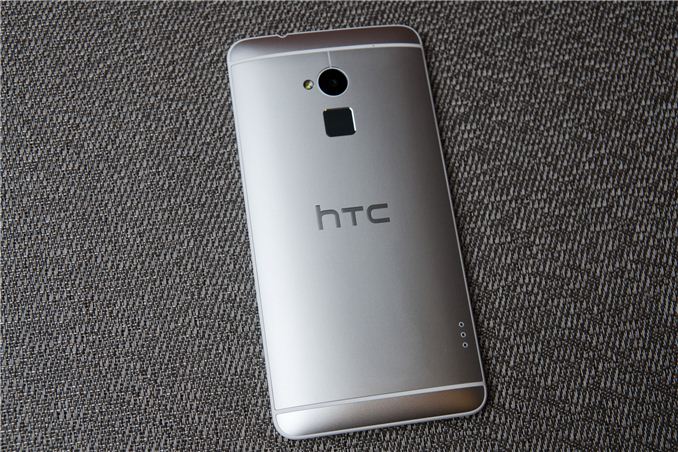
Big phones are all the rage right now. Although tablets promised the kind of extra screen real estate that would increase productivity while still retaining portability, there’s ultimately nothing more likely to be on your person than a phone. I wager that at least some of the success of the supersized smartphone form factor is still that a phone is ultimately always on your person, while a tablet still isn’t.
Today we’re looking at HTC’s newest member of its flagship One series, and its largest, the aptly named One max. Although HTC has been no stranger to larger display form factors (remember how big the HD2 seemed back in 2009?), the One max is to my knowledge the largest smartphone HTC has ever made, eclipsed only by the short lived HTC Flyer and Jetstream tablets. In the HTC phone portfolio, it’s easily the largest smartphone they’ve ever made, and that’s noteworthy.
The strategy for HTC’s One lineup seems to have been a simple one, differentiated by display size and form factor. We saw the flagship, dare I say midsized HTC One come first, then the smaller, lower end HTC One mini, and finally the huge HTC One max.
At a high level this strategy is pretty basic - offer three form factor options that yield almost the same experience. All three are predominately metal and share roughly the same industrial design notes, featuring an aluminum backside with top and bottom notches for antennas, center mounted camera, and LED flash. On the front, big stereo speaker grilles at the top and bottom, and the same button arrangement, just back and home.
I never had a problem locating the power button on the One, but then again I apparently have longer fingers than most. The power button moves down below the volume rocker on the One max, which does make sense since using your thumb to actuate power naturally positions your index finger right next to the fingerprint scanner.
I have no complaints about the buttons on the One max, they seem different somehow but still are communicative and don’t rattle around.
Up top there’s the headphone jack and IR port, which is slightly recessed. It isn’t the power button this time, just an IR window.
| HTC One mini | HTC One | HTC One max | |
| Height | 132 mm | 137 mm | 164.5 mm |
| Width | 63.2 mm | 68 mm | 82.5 mm |
| Thickness | 9.25 mm | 9.3 mm | 10.29 mm |
| Mass | 122 grams | 143 grams | 217 grams |
| Display Size | 4.3-inch | 4.7-inch | 5.9-inch |
| Display Resolution | 1280 x 720 | 1920 x 1080 | 1920 x 1080 |
| SoC |
1.4 GHz Snapdragon 400 (4x Krait 200) |
1.7 GHz Snapdragon 600 (4x Krait 300) |
1.7 GHz Snapdragon 600 (4x Krait 300) |
| Camera | 4 MP F/2.0 Ultrapixel with LED | 4 MP F/2.0 Ultrapixel with OIS and LED | 4 MP F/2.0 Ultrapixel with LED |
| Battery | 1800 mAh, 3.8V, 6.84 Whr | 2300 mAh, 3.8V, 8.74 Whr | 3300 mAh, 3.8V, 12.54 Whr |
| WiFi | 802.11a/b/g/n | 802.11a/b/g/n/ac | 802.11a/b/g/n/ac |
| Storage | 16 GB NAND | 32 GB NAND | 32 GB NAND + microSD |
If the dynamic range in size between the One mini and One is a 2 on an arbitrary scale of 1–10, the dynamic range between the One and One max is at least a 9. While the One mini really isn’t that much smaller than the normal One, the One max lives up to its namesake in a dramatic fashion. It’s positively huge, it literally is the One design taken to the max. The One max makes the Note 3 feel almost normal by comparison, and the entire normal sized 5-inch smartphone demographic feel downright small.
The One max is definitely a two-hand device, one handing it is difficult if not impossible, although I doubt that was anyone’s goal for this thing. It’s big in 2D dimensions, and it’s also somewhat heavy, at 217 grams, but I guess that’s expected given the material choices.
What’s interesting about the One max is that the truth is that its design is a lot more like a vastly larger One mini than it is the original One. We saw the mini come after the One and bring a plastic lip rather than the gorgeous diamond-machined edge that the One had, partly for cost reasons, partly for survivability when dropped on a hard surface. Truth be told, I can understand the rationale for having a plastic ring around the device and it making drops and blemishes a bit less destructive. I filed my HTC One down after a drop to my tile floor dented the chamfered edge a bit. The tradeoff however is that you’re now touching more plastic than metal.
I was initially turned off by the glossy plastic ring around the One mini, but if that was what had to take a hit to make the One mini the right price point for HTC to sell into operators and still make money, I was willing to deal with it. I’ll leave discussion of the faux-metal plastic speaker grille on the One mini for another day, which thankfully the One max doesn’t have.
Anyhow the One max inherits the same plastic ring around the edge design that the One mini debuted with. The polymer has been changed slightly, it’s a more matte, grittier finish that makes it a bit grippier and less chintzy feeling than the One mini’s slippery, glossy finish. The One max also includes aluminum speaker grilles, not the faux-metal plastic cutouts that adorn the One mini.
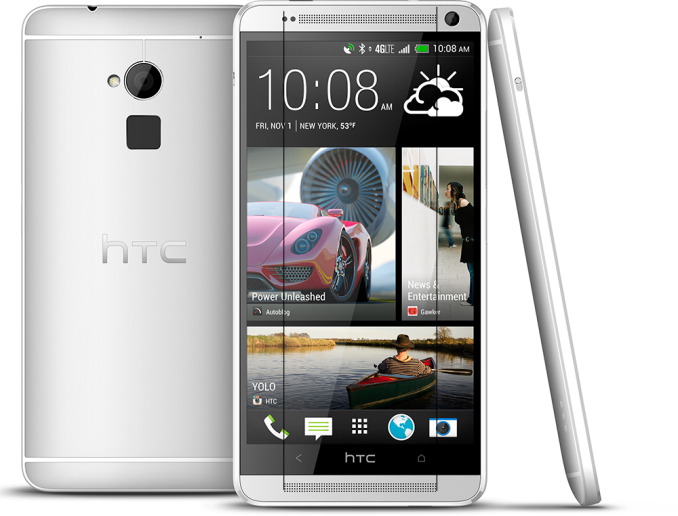
Now you also won't be able to unsee it (lines added to show asymmetry)
Let’s talk about the speaker grilles for a moment. What I loved about the original One design was how balanced everything felt. The polymer strips required for the antenna array carried over to the front and felt logical, it seemed like each cut had a purpose. On the One max however, I can’t get over how the speaker grille dots aren’t lined up and symmetrical at top. Something bugged me about the One max’s appearance for a few days until I noticed exactly what didn’t seem balanced anymore, so there’s that. I hesitate to make a big deal about it, but it might be a microcosm of what’s really weird about the One max.
The One max also takes a nod from a few of the Asian variants of HTC One which featured a removable back to accommodate two SIMs (when necessary) and a microSD card slot. The One max makes the removable back and microSD card slot standard, in addition to eschewing a SIM tray and enabling design commonality when dual SIM is necessary. What it doesn’t add is a removable battery, since HTC continues its use of a pyramid-like stack of display, battery, and PCB. Peel up the label and you’ll find out you’re looking at the top of some EMI cans and shielding rather than a battery, validating that. At the bottom of the HTC One max there’s no longer a Beats Audio silkscreen (since that partnership is over), instead just blank empty space. The nice thing about having the removable door is that the regulatory markings are on the inside, there’s no laser etched part and model text on the bottom third of the One max.
There’s a small slider on the left side of the One max which pops the removable door open, it then hinges and comes off completely.
There’s definitely a tradeoff associated with this approach though. For starters, although there isn’t much flex or play in the door after it’s attached, it requires a lot of effort to make sure the door is completely seated when re-attached. In addition there’s definitely a gap at top and bottom, which is unfortunate given HTC’s narrative about zerogap construction for the original One.
The only caveat is that the One max myself and a few others were sampled was in fact a PVT (Production Validation Test) as marked, so it’s possible the door is being slightly tweaked, but I doubt it’ll change much. I’ve said my part already on microSD cards and the fact that they’re going the way of the dodo in smartphones, I just don’t need one anymore, and definitely not at the expense of build quality. It is convenient not having to use a SIM ejector tool though, even if I carry one around all the time anyways. For the incredibly small percentage of users that clamors for an SD card every single smartphone launch, it’s at least one point which won’t be belabored so tiresomely this time.
In a lot of ways the construction of the One max is more like the One mini, and I fear that comes hand in hand with making what was an expensive design (the One) profitable, something HTC does need. It still is premium and combines metal and plastic in a pleasing way, but there clearly were tradeoffs on the road to the One max.
The One max isn’t so much a phablet as it is a huge phone. I don’t know if the supersized phone market is quite mature enough to really tell what the defining properties for a phablet are yet, but the scaled up One design makes the One max feel like a huge phone. HTC doesn’t go for an active digitizer and slide-out stylus with the One max, there’s an optional capacitive stylus that’s a standalone accessory, and the scribble application I’ll get to in a bit. I don’t think there’s anything wrong with that approach quite honestly (I wager not many Note users actually use the stylus), it’s just something to note.
HTC Power Flip Case
HTC also sampled their new battery case, which is like the flip case we saw for the One but includes a battery in the screen cover portion. Think the Surface’s new Power Cover, but for the HTC One max. The power flip case uses three pogo pins to connect the battery directly to the One max, it’s what the pogo pads on the back of the phone are for. The case snaps on around the perimeter of the One max, and the front portion folds over the display, just like the flip case. The units we were sampled weren’t final however, and had some issues with proper fit, although fit should be rectified in the final version.
The battery isn’t huge, at 1210 mAh and 3.75V (4.53 watt-hours), but it does give a boost as I’ll show in the battery section. It also does add weight what is already an unmistakably heavy phone, and makes using the fingerprint scanner a bit more awkward.
When the power flip case is attached you get a small plus sign on the battery symbol in the status bar. I’m not sure how this actually works in practice, as the One max seems to draw from both the internal battery and the external battery at the same time, rather than using the external battery to charge the internal one. It does boost battery life however.


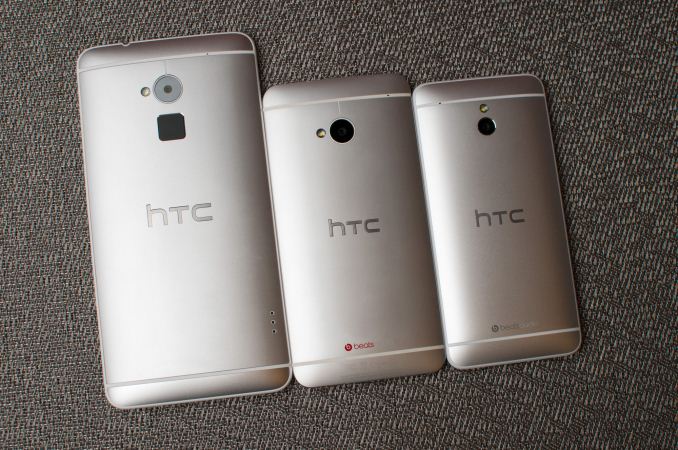
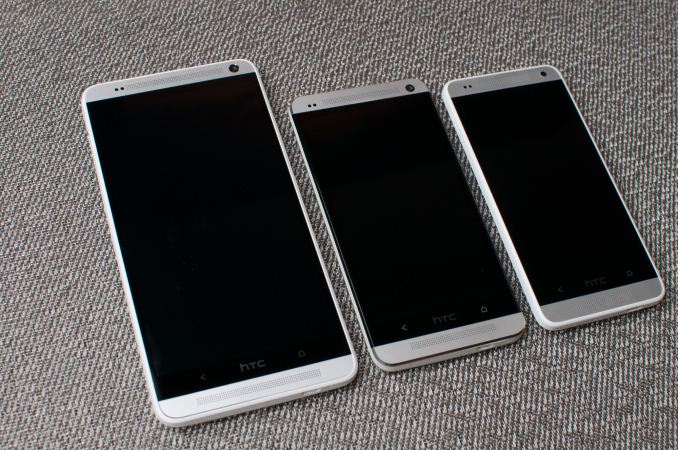
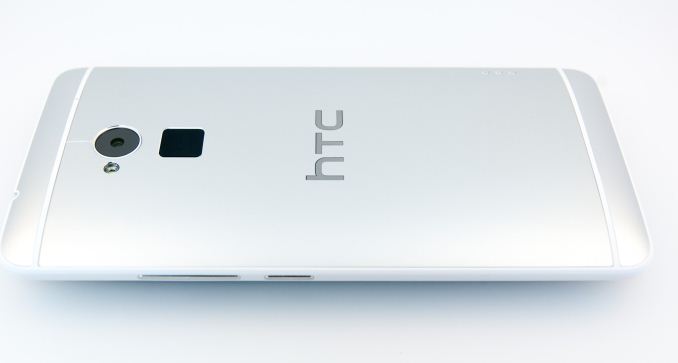
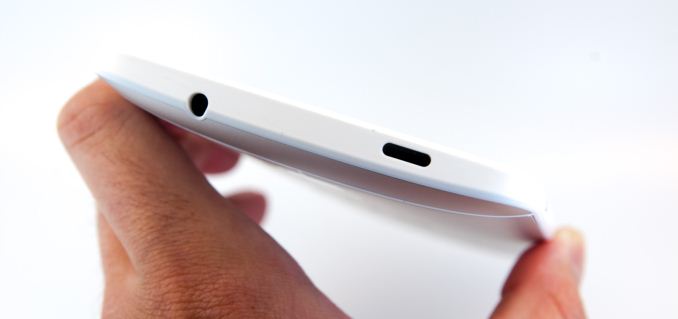
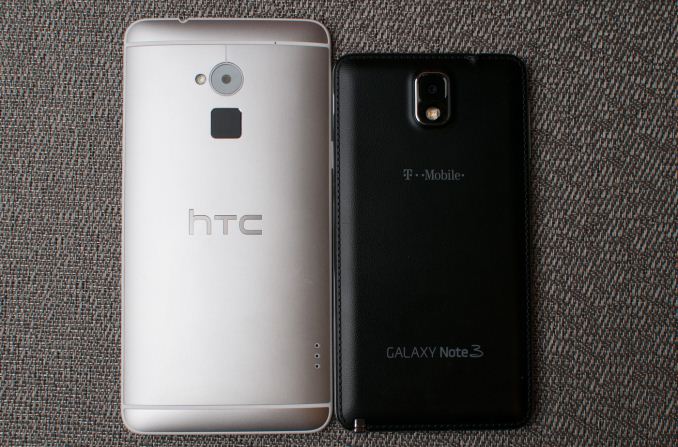
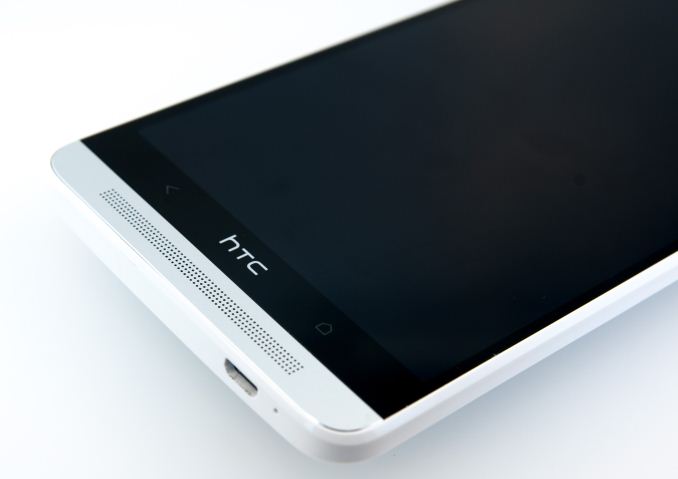


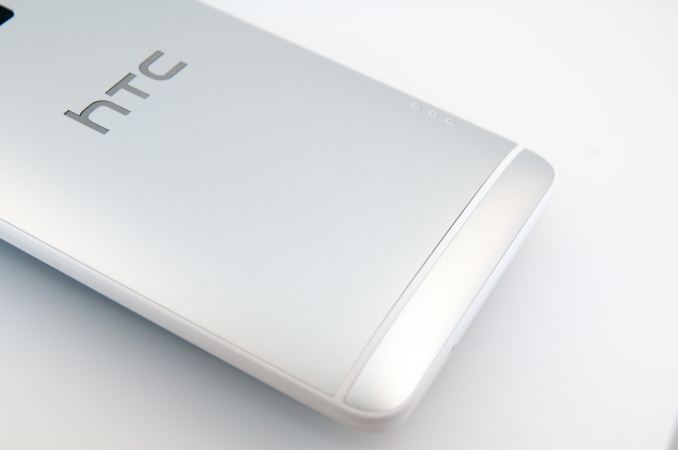
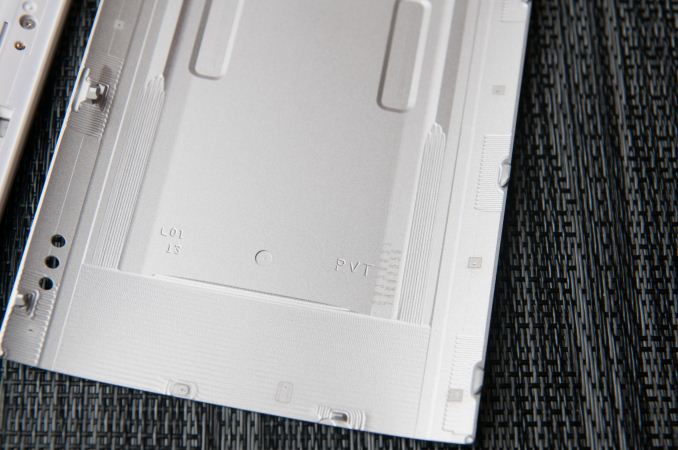






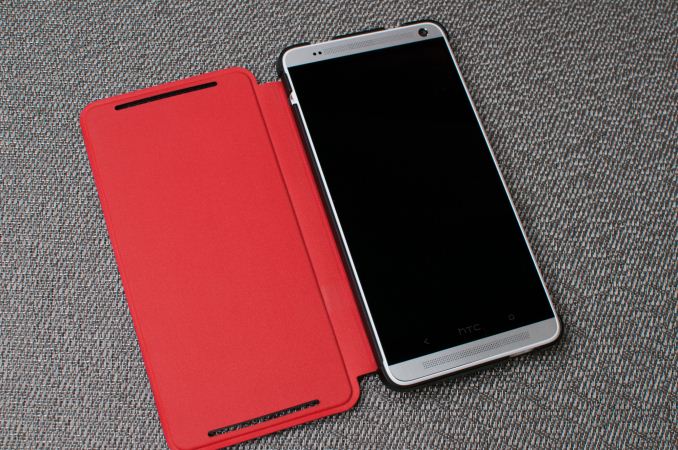
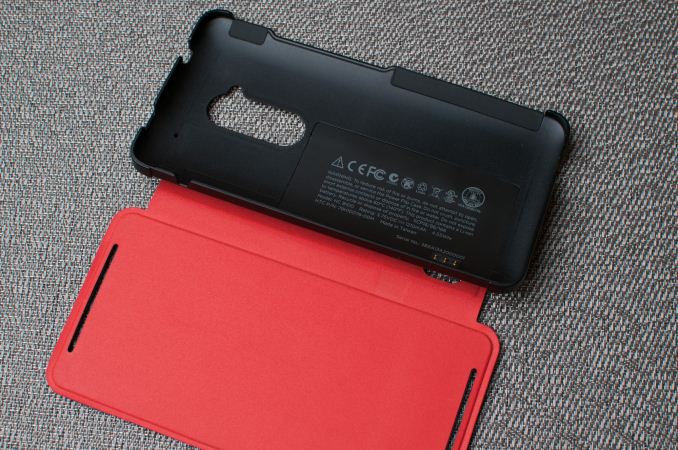








197 Comments
View All Comments
chizow - Tuesday, October 29, 2013 - link
Couldn't have written it better myself, I'll be honest and say I haven't read through an entire one of Brian Klug's reviews but if they were all filled with this kind of distorted reality transposed to the general populous, I probably wasn't missing much.Simply put, microSD opens up uses that base model 16GB phone users could never dream of using for their phones. For example, I recently had 2 large family events during the same weekend, took multiple movies at full 1080p on my SGS4 with a UHS-I microSD and captured around 25GB of footage. Never could I have done this with my 16GB Apple 4S, nor would I even attempted to do it.
And what would the other option be? Pay 2x as much for 16GB more? No thanks, not when I can just move my microSD card from one phone to the next and not get fleeced on extra storage every time I buy a new device, with my own money (seems to be a key point lost upon Brian, anyways).
seapeople - Tuesday, November 5, 2013 - link
So let's see... I'm a budget conscious consumer who is shopping for a smartphone that I'm going to keep for 4 years because I'm too cheap to upgrade sooner. My options are 16GB phone + microSD card for a total four year price of $3600, or a 64GB phone with faster native storage for a total four year price of $3760.Can't you see why it's absolutely ridiculous how you microSD shills freak out over such a pointless little feature? Just buy the overpriced flash storage and forget about it, it's barely a bump in the road for someone who's paying for a smart phone data plan anyway.
Spunjji - Thursday, November 28, 2013 - link
Nice work, that straw man was totally asking for it and boy did you give it to him. You're such a big man.tipoo - Monday, October 28, 2013 - link
I do like the cheating table of shame there, but I also worry that this would just make the cheating more sophisticated, with phones being able to detect apps even with renames and hide their clock speeds etc.FalcomPSX - Monday, October 28, 2013 - link
just how big are phones going to get before people realize how absolute ridiculous it looks holding a tablet sized device up to your ear? Something the size of the original htc one is just about right.AssBall - Monday, October 28, 2013 - link
Its more ridiculous watching someone hold a tiny phone 8 inches from their face so they can see what it says and push the tiny buttons. I'll take a larger phone any day. Easier to use, harder to lose, good battery, nice screen size.MikePCUser - Monday, October 28, 2013 - link
Comparison videos between the One Max and the One on YouTube also show the MICROPHONE is decidedly inferior on the One Max. I wish you had tested that as well!chizow - Monday, October 28, 2013 - link
Brian, while you are certainly entitled to your opinion of every aspect of the smartphone market, I think you need to take a step back and realize not everyone is in your situation and receives free phones for review or a product budget for AT to buy review samples.I think your comments with regard to SD cards in particular are off target, as it is an important feature for many users who do not want to pay exorbitant amounts for miniscule increments of storage. 128GB models if some popular phones like the iPhone 5S literally double the on-contract price vs a 64GB SD card that sells for 50 bucks.
Contrary to what you have said, the fact the One Max's inclusion of an SD slot along with myriad other Android and Windows tabs and phones illustrates SD slots are NOT going the way of the dodo. Hopefully companies do not take your opinions on the matter as fact.
Brian Klug - Monday, October 28, 2013 - link
Please read my above comments about SD cards, the reality is that the demographic that uses them is a lot smaller than you'd think.Also there's no 128 GB iPhone 5S, just 64 GB.
The context everyone is missing is that I would not trade an SD card slot for the removable door and build quality tradeoffs it brings.
-Brian
10101010 - Monday, October 28, 2013 - link
What you present regarding SD cards and build quality tradeoffs is largely a false dichotomy based on your own biases regarding particular aspects of "build quality".Take for example, the Sony Xperia Z Ultra. It's about the same size as the One Max and offers SD card expansion. Many reviewers have positively commented on the build quality of this device, even noted that it offers water and dust resistance. A more insightful reviewer would realize that it isn't the SD card that is responsible the particular issues you have with build quality, it is the fact that the phone wasn't designed well to begin with.
Of course, you would probably still disparage all the purchasers of this device for wanting flexible affordable local storage and find some way to disparage the device for poor build quality anyway. After all, biasing people away from flexible and cheap local storage and towards expensive and easily data-mined in-cloud storage is what your corporate masters want, isn't it?
If we look at your shallow view of "build quality", then it becomes even more obvious that there is a false dichotomy. You don't spend much time balancing how easy it is to repair a device vs. how it is built. You don't balance the fact that many phones with removable back covers have replaceable batteries. Nor do you balance the additional radiation going into someone's head because a phone is made of metal. Essentially, you are looking at a few aspects of something that resonate with your biases and proclaiming some judgment that SD cards are bad for phones and that the people who want SD cards are some sort of small, unimportant, and obnoxious minority.
Even if you continue to push your biases in your "reviews", maybe it's time for a bit more honesty? You can still write a good review if you say "I just don't like SD cards because it's hard for me to manage removable local storage".